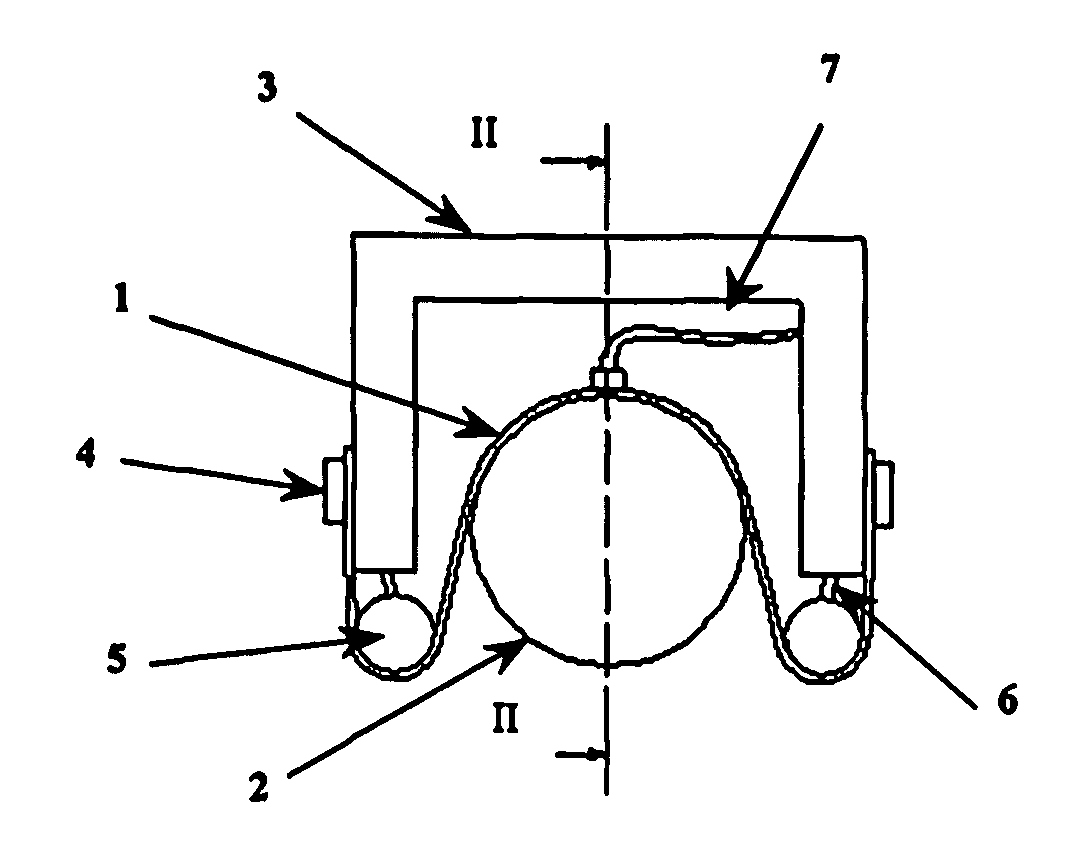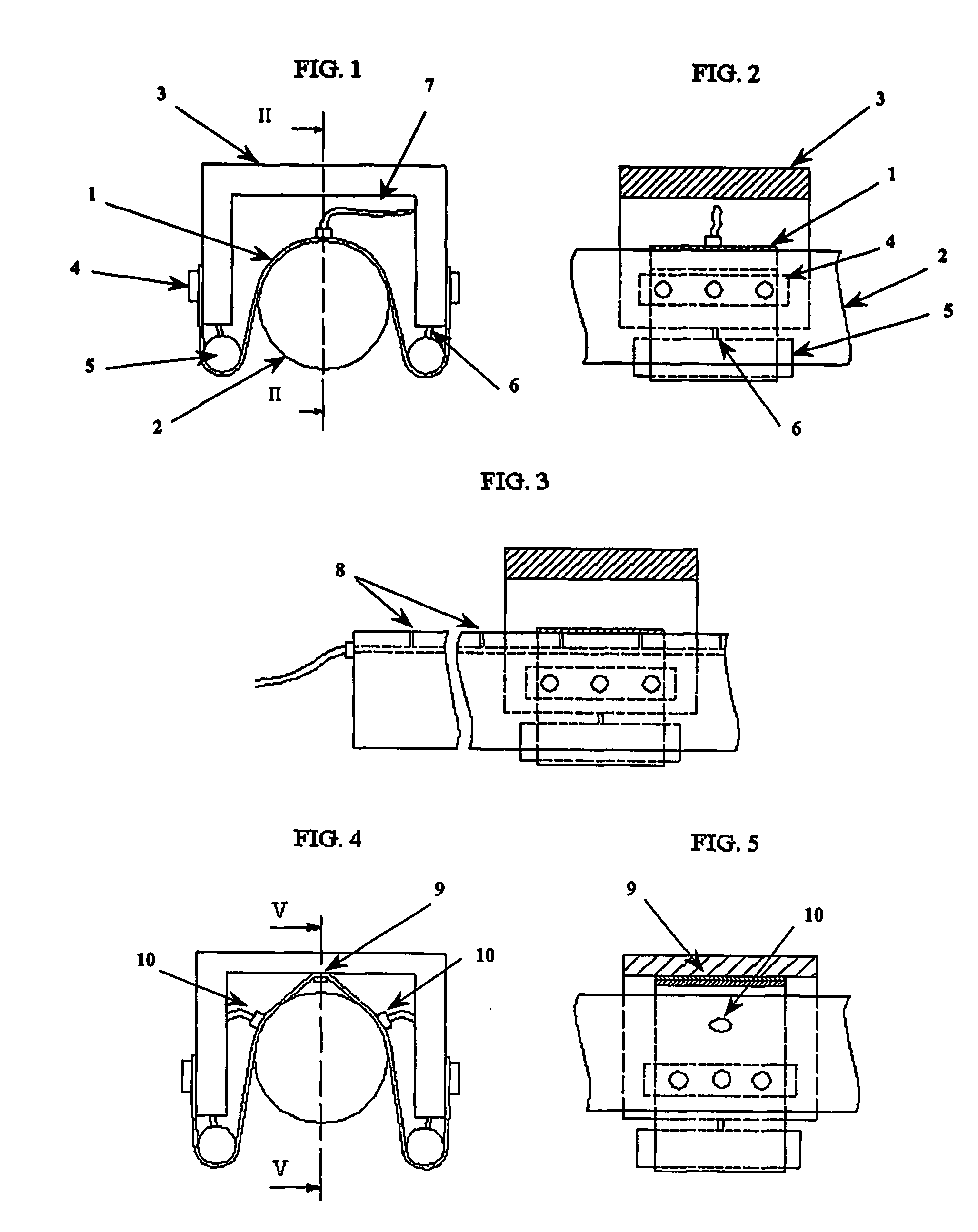Novel foil bearing
a technology of foil bearings and bearings, applied in the direction of bearings, linear bearings, shafts and bearings, etc., can solve the problems of spindles and other components, the inclination of the bearing, and the thermal expansion of the spindl
- Summary
- Abstract
- Description
- Claims
- Application Information
AI Technical Summary
Benefits of technology
Problems solved by technology
Method used
Image
Examples
example 1
Externally Pressurised Foil Bearing with One Air Supply Through the Foil and One Foil
[0077] A specific example of the foil bearing includes a rigid frame of any convenient shape (e.g. π), a flexible foil, a flexible gas / air supply line and two small self-aligning cylinders. The foil embraces the round rail partially. Liquid or gas is supplied via the flexible hose that is attached to the foil at one or several points. Small holes in the foil (the restrictors or supply holes) enable the fluid to enter the gap between shaft and foil. The thin foil is fixed to the frame by clamping plates, gluing, welding or any convenient way.
[0078] Two self-aligning cylinders guide and support the foil. They are attached to the frame by appropriate hinges. As these axes can rotate freely, for a certain amount, they make sure the foil is embracing the shaft correctly at all times, reducing alignment problems.
[0079]FIGS. 1 a and 1b illustrate the embodiment of the present invention, which is suited ...
example 2
[0084]FIG. 3 shows an implementation in which the air is supplied through the shaft. Several air inlets 8 in the shaft replace the need for a hose in the foil, thus overcoming the difficulty of air supply through the foil. This configuration can be useful for small stroke applications.
example 3
Foil Bearing with an Extra Fixation of the Foil to the Frame
[0085]FIGS. 4 and 5 show a configuration enabling multidirectional stiffness in a single frame. This has the advantage of demanding less space than placing two separate bearings with stiffness in only one direction rotated with respect to each other. A negative aspect of this structure is the reduction in total stiffness. Fixation 9 of the foil in the middle of the frame results in two separately operating foil bearings rotated with respect to each other. Naturally, at least two supply holes are needed 10.
PUM
 Login to View More
Login to View More Abstract
Description
Claims
Application Information
 Login to View More
Login to View More - R&D
- Intellectual Property
- Life Sciences
- Materials
- Tech Scout
- Unparalleled Data Quality
- Higher Quality Content
- 60% Fewer Hallucinations
Browse by: Latest US Patents, China's latest patents, Technical Efficacy Thesaurus, Application Domain, Technology Topic, Popular Technical Reports.
© 2025 PatSnap. All rights reserved.Legal|Privacy policy|Modern Slavery Act Transparency Statement|Sitemap|About US| Contact US: help@patsnap.com



